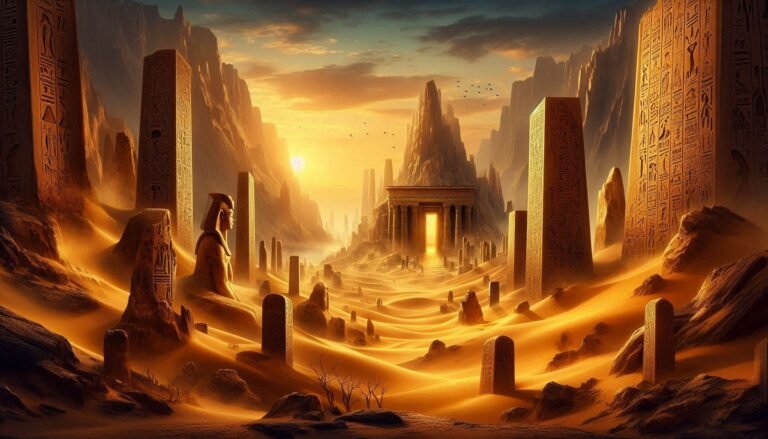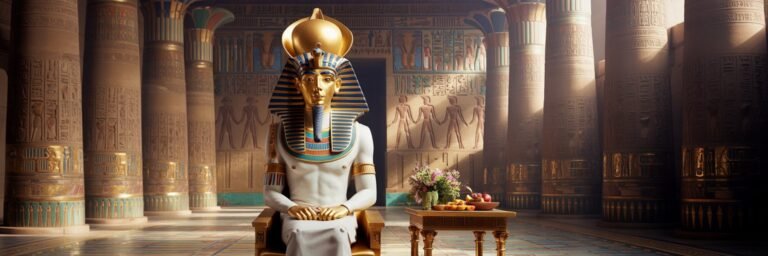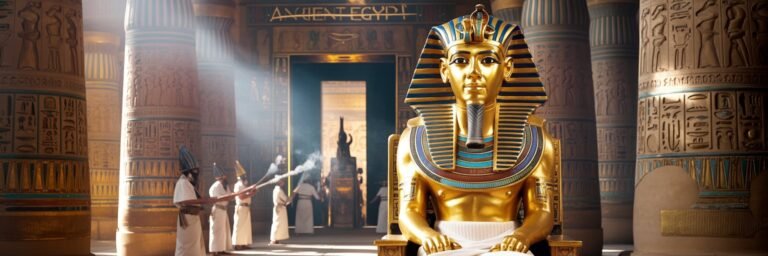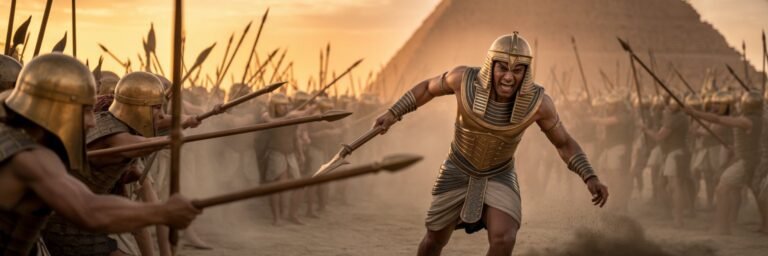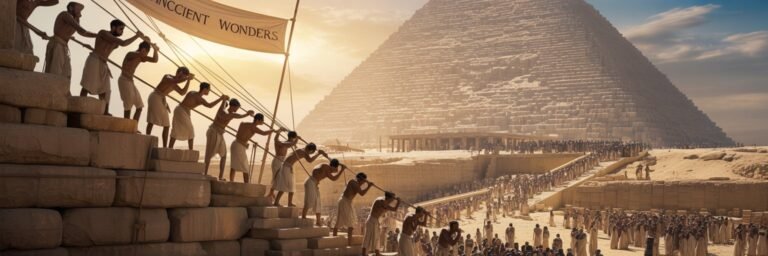INTRODUCTION
In the expansive timeline of human civilization, no era magnetizes intrigue quite like the epoch of Ancient Egypt. An era distinguished by dynastic power, spiritual mysticism, monumental architecture, and technological ingenuity. Within this complex and fascinating historical tapestry, vivacious figures emerge – chronicled in parchment and stone as the heroes and villains of antiquity. Poised between the realms of mythology and history, their stories offer invaluable insight into the psyche, ethos, and intricacy of ancient Egyptian society.
HISTORICAL BACKGROUND
Ancient Egypt, unfolding over the long arc of 30 dynasties from 3150 B.C. to 30 B.C., was marked by relative stability, punctuated by periods of turmoil, invasion, and flourishing cultural evolution. Great Pharaohs, including household names such as Tutankhamun, Ramses II, and Cleopatra VII, along with shadowy villains such as the heretic king Akhenaten, play pivotal roles in the narrative. To comprehend their journeys, we must delve into the heart of the Nile Valley, a fecund cradle that nurtured a civilization renowned for its advanced bureaucracy, pioneering medical knowledge, intricate symbolic language, and deep spiritual conviction.
THEORIES AND INTERPRETATIONS
Every historical reconstruction, especially one as delicate and distant as Ancient Egypt, is contingent on interpretation. Two contrasting methodologies typically govern our understanding – the Orthodox theory, traditionally held by Egyptologists, and the Revisionist perspective, promulgated by a heterogeneous group of scholars, and enthusiasts.
Orthodox interpretations of pharaohs such as Ramses II view him as a stalwart hero—whose martial prowess, diplomatic acumen, and infrastructural prowess certainly align with the prototypical heroic image. Conversely, revisionist perspectives point to descriptions of excessive cruelty—he was, after all, possibly the Pharaoh of the Hebrew Exodus—and call into question the hero status.
Similarly, Akhenaten, lauded for his ahead-of-his-time monotheistic revolution, is painted in darker shades by some revisionists who view him as a risk-averse maverick whose religious zeal destabilized the Egyptian polity. This interpretation raises a universal query: who gets to delineate between a hero and a villain?
MYSTERIES AND CONTROVERSIES
Ancient Egypt is steeped in mysteries and controversies that contribute towards reconstructing the lives of its heroes and villains. The mystery surrounding the young Pharaoh Tutankhamun, who passed away abruptly at 19, spawned numerous theories, including murder hypotheses. Another controversy is the co-regency dispute between Hatshepsut and Thutmose III. Hatshepsut took over the reign soon after Thutmose III ascended to the throne as a minor, leading some to interpret her as usurping power, while others argue her intervention was crucial for sustaining stability.
The Sphinx and the Great Pyramids’ construction still inspire multiple debates involving aliens, lost civilizations, and supernatural assistance. These contested narratives indirectly cast the Pharaoh Khufu, under whose reign the Great Pyramid was built, alternately as a visionary genius or a ruthless tyrant.
SYMBOLISM AND CULTURAL SIGNIFICANCE
The portrayal of Ancient Egyptian heroes and villains is inextricably tied to the rich symbolism of its culture, where animals, insignias, gods, and goddesses held associative meanings. The Pharaoh, being the intermediary between humans and gods, was depicted wearing the Pschent – a dual crown symbolizing the unified reign over Upper and Lower Egypt.
The ibis-headed god, Thoth, symbolized knowledge and wisdom and was often invoked to demonstrate Pharaoh’s wise judgment. Conversely, negative elements were often represented using Apophis, the serpent god of chaos and destruction, who was battled nightly by the sun-god Ra, a constant battle between good and evil.
MODERN INVESTIGATIONS
Modern investigations employing advanced techniques such as DNA sequencing, radiocarbon dating, and high-resolution imaging have exponentially increased our understanding of Egypt’s ancient heroes and villains. Evolved forensics have recently strengthened the illness-and-genetic-disorders theory behind Tutankhamun’s death.
Cutting-edge technologies led by scholars like Jean-Pierre Houdin propose internal ramp theories that convincingly explain the construction of the pyramids, debunking many outlandish alien theories and reinstating Pharaoh Khufu as an administrative genius rather than an oppressive overseer.
LEGACY AND CONCLUSION
The legacy of Ancient Egypt’s heroes and villains extends far beyond mere historical interest. They embody paramount lessons on power, morality, leadership, spirituality, and human nature. They remind us of the complexities of interpreting historical facts and how blurred the line between a hero and a villain can be.
While embracing technology and scientific advances to unravel the mysteries of antiquity, our understanding of these figures must also evolve. As the saying goes, ‘history is written by the victors,’ and hence, it is crucial to continually question, probe, and reassess the narratives handed down to us. After all, the duality of hero and villain might just be a reflection of our own.

